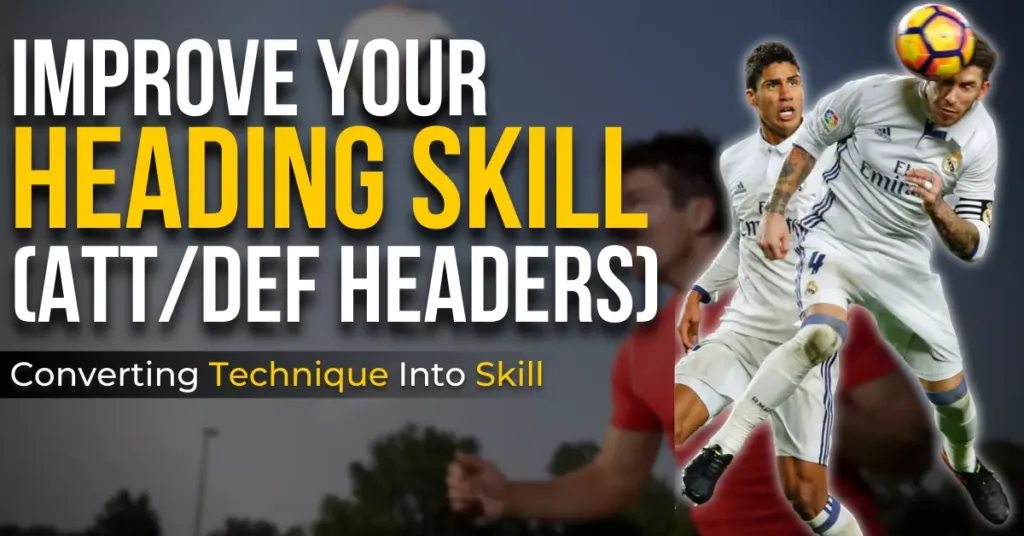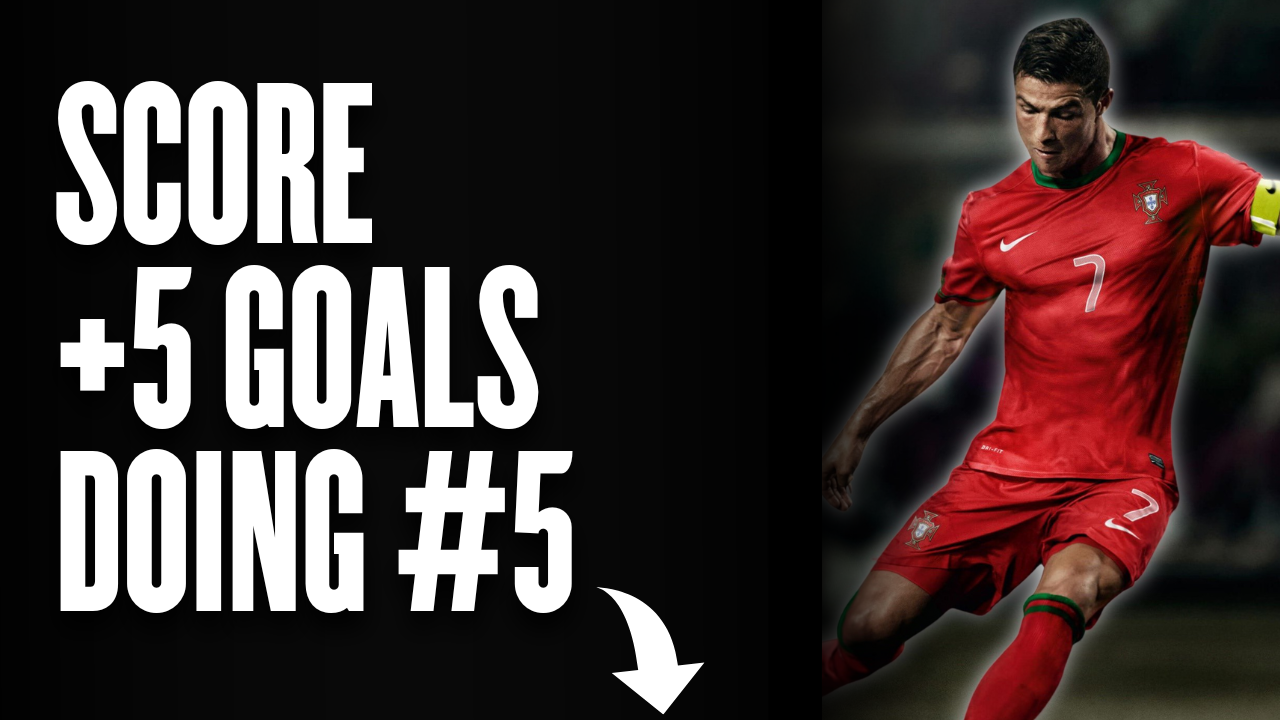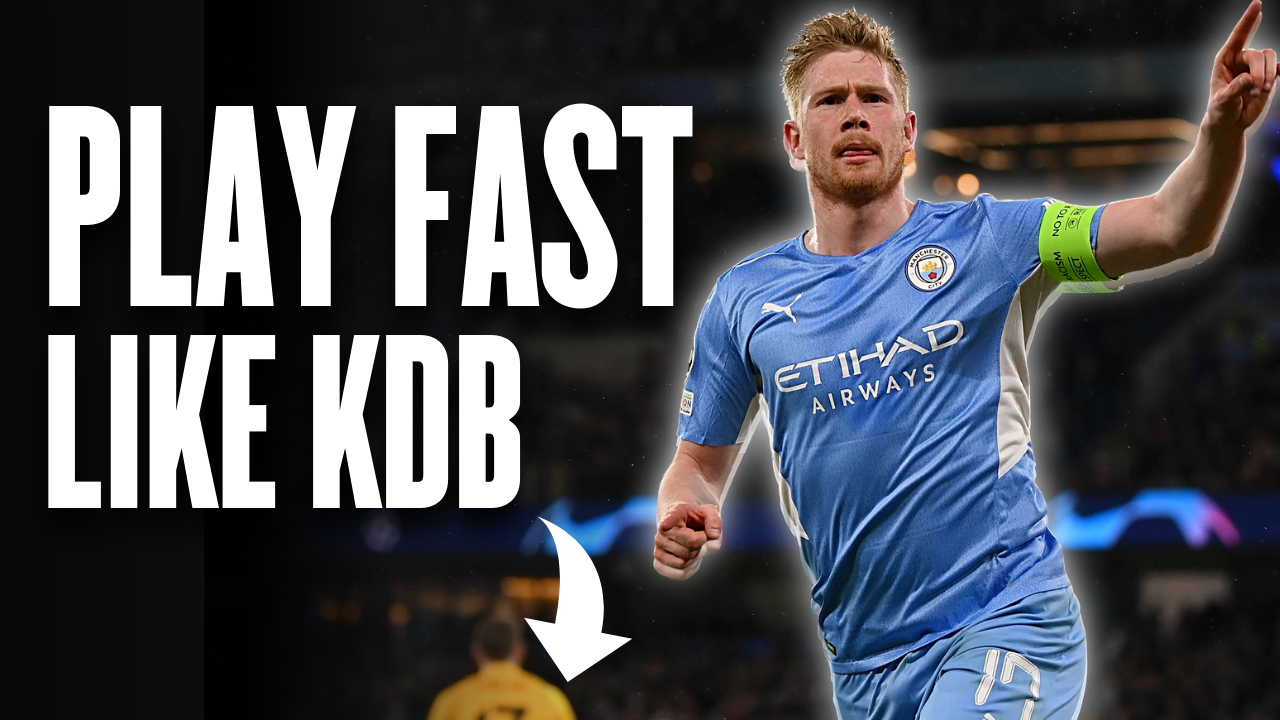
Heading is a common technical skill of football that you need to improve and master to have a greater impact. Apart from passes being played on the ground, we also see the ball in the air many times during a game.
Heading can be an action used both for defensive and attacking purposes. For example, an aerial duel is an instance where heading is used as a defensive tool, whereas a header inside the box with the aim of scoring a goal is a skill used by the player attacking.
Players with good heading skills are a valuable asset to their teams. Not only does it make them more effective in winning duels, but it also makes them more versatile as players, providing solutions both in the defense and in the offense.
In this article, we will analyze every aspect of heading in football, both as a technique and as a skill, to help you #levelUP your game.
What Is The Difference Between Heading Technique & Skill In Football?
Technique in football, and sports in general, is an intentional and effective sequence of movements (i.e. heading a ball with correct technique from point A to point B).
Skill in football, and sports in general, is an intentional and effective sequence of movements used to solve (a) specific problem(s) in the constantly changing/chaotic environment football has to offer (i.e. marking yourself off of a defender during a corner, positioning yourself correctly, timing your run-up and take-off with the trajectory and the pace of the ball, and scoring a header under the pressure that the opposition is applying to you).
As you may notice, technique emphasizes movement quality whereas skill requires a variety of qualities that make the execution of a certain technical aspect more or less effective.
While both you and Sergio Ramos might be able to just head the ball with your forehead, it requires skill to win a defensive header during a game at the world-class level.
You see, Ramos has a greater level of heading skill that enables him to win some difficult headers against world-class opponents. It requires a great level of cognitive and technical skills, but also emotional management, focus, control, and dealing with internal and external sources of pressure to be able to express a technical movement with exceptional skill.
Technique can be quantified in the world of kinematics and biomechanics (in terms of joint and approach angles) whereas technical skill is both a quantitative (technical aspect) and qualitative aspect of performance that goes much deeper into each action in comparison to plain technique.
What Are The Differentiating Factors Of Heading Skill VS Technique?
Skill is your ability to use a technical aspect of your game with efficiency and control to solve a sport-specific problem. This problem you meet in-game and its solution are dependent upon multiple factors that can either increase or decrease that scenarios’ difficulty and complexity.
The more complex a game scenario the harder it is to find a solution and use it with the right timing and technical efficiency. There are certain factors that are present in your ability to execute a header with skill.

*As an affiliate, I'm earning from qualifying purchases without any extra charges being placed on you.
Here are 5 of those according to Hirtz that need to be taken into consideration if you’re trying to improve your heading in football:
- Kinaesthetic differentiation – your ability to perceive and control the strength/power, timing, and spatial parameters of the ROM of a certain movement (i.e. how to move your neck while in contact with the ball to give direction to your header)
- Space-Time orientation – your ability to perceive and process information from your surroundings to coordinate your movements in space (i.e. your perception of the field in combination with your tactical intelligence enable you to position yourself properly)
- Balance – your ability to stay balanced or regain your balance in a constantly changing game environment or solving complex problems in unstable game scenarios (i.e. your ability to sustain balance against your opponent while in the air, dueling for a header)
- Complex reactionary ability – your ability to execute a certain movement in a given moment and with a specific timeframe in reaction to the different stimuli you receive during a game (i.e. reacting at the right time to a cross being whipped in)
- Rhythm – your ability to time movements in an efficient manner (i.e. your ability to execute the skill of heading with fluidity)
Having said all of that, we now understand that skill is much more than technique and more applicable to the constantly changing scenarios we meet inside a football match.
IF YOU WANNA LEARN MORE ABOUT “SKILL VS TECHNIQUE” CLICK HERE!
Heading In Football – What Is It & When Is It Used?
Heading is a fundamental technical aspect of football where the player makes contact with the ball using his/her forehead.
Headers are used to defend and attack while the ball is in the air. The aim of a good header is to either score a goal, maintain/regain possession of the ball, or eliminate a goalscoring threat.
As mentioned we have two types of headers;
- Attacking Headers – used to score or assist goals or maintain possession of the ball to progress the play
- Defensive Headers – used to regain possession of the ball or stop an attack/goal
Based on how the header is executed, we have two types of headers in football;
- Standing Headers – both feet are on the ground either in a split stance or shoulder-width apart
- Jumping Headers – both feet are in the air with either a bilateral or unilateral take-off and/or landing
Improve Heading In Football – A Technical Breakdown
The first and most important step towards mastering heading as a skill is to nail down the basic technical aspects of it.
Technique is the foundational component of any game skill and is the primary determinant of the success or failure of your actions.
Here are some basic coaching points and technical cues that you should be aware of in order to improve and master heading as a skill in football:
HEADING TECHNIQUE
- Visual contact with the ball and its trajectory
- Proper positioning based on the anticipated contact point with the ball
- Decision-making; standing or jumping header?
- Arched upper body to create momentum
- Forehead & body move fast to strike the ball (ATTENTION: only use your forehead to strike the ball)
- Eyes remain open during the whole execution of the skill
- Neck & head follow through with the desired trajectory of the ball
- Land safely with both feet (in case of a jumping header)
COMMON TECHNICAL MISTAKES
- No/Limited visual awareness of the ball path
- Improper positioning
- Incorrect decision on whether to jump or remain at a stationary position
- Stiff body that doesn’t create momentum
- Not using the movement of your neck and body to generate power and make the ball rebound
- Not using your forehead (increased risk of injury)
- Eyes remain closed during the whole execution of the skill
- Stiff neck/head that don’t follow-through to hit the target
- Improper landing mechanics in case of a jumping header (increased risk of injury)
Improve The Skill Aspect Of Heading In Football
Once you master the basic technical elements of heading (which usually happens at an early age) you should slowly transition from basic to more complex training stimuli.

*As an affiliate, I'm earning from qualifying purchases without any extra charges being placed on you.
This is done in an attempt to develop the skill of heading in the context of a constantly changing aka chaotic game environment. However, this doesn’t mean that all of your drills should be complex.
In fact, a vast majority of the training time needs to be invested in sharpening the technical base no matter the age, playing level, and experience of the individual.
Training Tips To Improve Heading Skill In Football
5 TRAINING TIPS TO IMPROVE HEADING IN FOOTBALL
1. Slow down your heading drills and strive to achieve kinaesthetic differentiation and technical mastery
The slow pace of a drill will allow you to focus on the quality of each repetition and really take control of all the kinaesthetic elements of the action (approach angle, a quick glimpse of the target, arched back for momentum, moving, and following through with your neck, fluidity of jump and header, etc.).
This can be done in various ways. For example, you can get a feel of your heading technique before a crossing session by having someone throw the ball at you at a slow pace and you practicing a weak point of your heading ability i.e. your fluidity during your follow through with your neck.
It is during those repetitions that you wanna focus on every little detail of your heading technique. This doesn’t have to take much of your time. A couple of repetitions are enough.
From how you run up to the ball to where you strike it. Every little detail matters.
Practice the technical cues inside your mind, slow down the first reps, and slowly transition into more intensive and game-realistic work.
2. Use visual and verbal stimuli to add reactive components to your heading drills
We mentioned that a football game is chaotic and unpredictable in nature. By including certain reactive components in training, we can get the player closer to game-realistic situations.
At the end of the day, it all comes down to the perception-action coupling principle. Perceive information around you, process it, and act upon it with proper timing and quality of action.
Although you can’t perfectly simulate game conditions with reactionary drills, it is wise to use cognitive components inside your heading drills.
For example, you can use a cognitive stimulus that will dictate whether you’re going to perform a stationary or jumping header; move to the near or far post; head the ball towards the right or left side; perform a cushion or defensive header.
Using a cognitive stimulus is great as it gets you into the habit of lifting your head up to scan and use visual information that will guide your actions.
Play around with such drills and include variety in your training.
THIS IS HOW TO IMPROVE YOUR REACTIONS IN FOOTBALL
3. Combine heading drills with off-the-ball movements
Have you been just performing stationary and jumping heading drills?
Although this might be a good starting point to get the technical elements of each shot nailed down, it isn’t quite the best way to achieve skill mastery. Including other training stimuli that make the drills more game realistic can help you with that.
One way to do that is through off-the-ball moves.
Off-the-ball moves are utilized in-game for effective positioning and timing. Analyze your game and see what moves you are usually using before going in for a header.
Do you mark yourself off of an opponent in a specific way? Are you backpedaling to position yourself correctly? Are you utilizing reversed runs to create space for yourself?
Find what moves you’re most commonly using and couple them with heading drills. An absolute game-changer when it comes to finding your rhythm, timing, and positioning.
THE way to transform your training efforts to match-day results.
4. Practice with pressure
Just performing headers without any pressure is a good starting point. Gradually throughout the session increase complexity by introducing opponents that will duel you and try to throw you off balance.
As we mentioned, every skill requires you to maintain or regain your balance in unstable game environments. Using opponents to apply pressure to you further increases the difficulty of the drills and makes it more specific to the game.
5. Take that glimpse of the target area – do NOT neglect this!
Awareness of your target is more important than you think. That split-second view of your teammate being open for a cushion-header or the GKs positioning triggers signals to your nervous system that heavily dictate and guide your actions and their success.
Practice that quick look of the target at training so that it can happen subconsciously when it is game time.
You won’t be able to pull this look off with every single header you get into, but the habit of scanning before heading is key to success.
7 TRAINING STIMULI TO ADD IN YOUR HEADING DRILLS
- Cognitive (visual/verbal cues)
- Technical (coupling one game skill with another, i.e. passing combinations to cross to header)
- Tactical (i.e. using off-the-ball movements)
- Space (increase or decrease the space of the drill to decrease/increase positioning demands)
Tips To Improve Attacking Heading In Football (Score/Assist More)
- Decide what is better; try to assist or score?
- Be aware of where the goalkeeper is positioned
- Blindside runs are great for tall attackers
- Time your run-up and take-off with the cross
- Meeting the ball at the highest possible point increases your success rate
- Either get your body or head in front of your opponent
- Be aware of committing easy fouls
- Always follow-through with your neck – your eyes should be looking at your target point once the header is complete
- Don’t go up for a header just to go up for a header – be confident, have a purpose, attack the ball
Tips To Improve Defensive Heading In Football (Regain Posession/Eliminate Threats)
- Take a glimpse in front; is a cushion or a clearance header better?
- Be aware of where the attacker is positioned – blindside runs are a threat
- Position yourself in front of the opponent – always in accordance to the trajectory of the ball
- Meeting the ball at the highest possible point increases your success rate
- Either get your body or head in front of your opponent
- Be aware of committing easy fouls
- Winning a foul is easy – don’t overuse this though
- When clearing the ball away, aim for high, deep, and wide header
- Don’t go up for a header just to go up for a header – be confident, have a purpose, attack the ball
- A sideways approach might help you balance better
Final Thoughts
The mastery of the technique and the mastery of the skill are two different things. However, the one depends on the other.
Without technical mastery, you can’t acquire a skill, and without skill acquisition, you cannot develop into an elite-level footballer.
Slow down the process and don’t rush things. Master the technical elements and slowly add various training stimuli that increase complexity and challenge you further.
Working hard is great. Working SMART is genius.
Fast forward your progress and achieve a higher quality of results by training SMART.
RELATED ARTICLES
- Improve Your Technical Skill Level In Football
- 9 Ways To Become A Smart Footballer | (World-Class Level)
- 10 Ways To Build Chemistry With Your Teammates In Football
- This Is How To Improve Your Reactions In Football
- Improve Your Speed Of Play In Football/Soccer
- Offensive Pressure – How To Beat It | A Guide For Footballers




